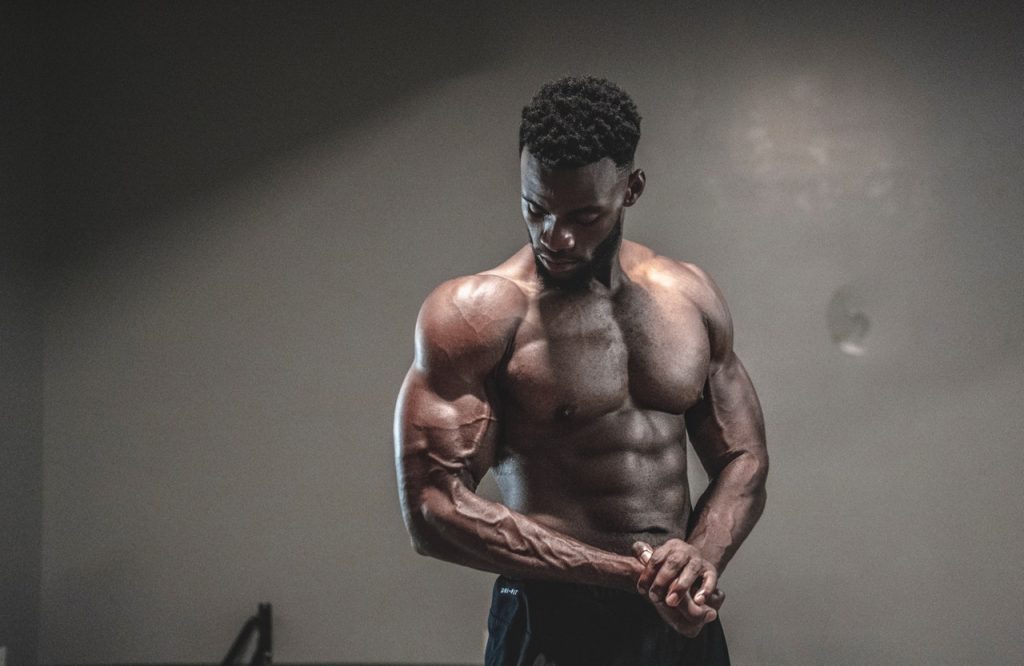
The best online fitness resource you'll ever need. We filter out the BS to ensure you meet your health and fitness goals!

The best online fitness resource you'll ever need. We filter out the BS to ensure you meet your health and fitness goals!

We care a great deal about health and fitness here at This Is Why I’m Fit.
The clue is in our name, after all.
However, this is all well and good, but what do we actually mean by this? What does it mean to be fit and healthy, and how can any of us actually get there?
Some people may think fitness and good health equate to ripped six packs, body fat percentages in the low single digits and striated, vascular muscles rippling across every limb, that running a marathon or being able to deadlift twice your bodyweight paint the full picture. But this doesn’t quite feel right. There should be more- there is more. It takes a whole host of things to create a fit, healthy individual who performs to their optimum and lives their best life, happy and well in mind and spirit, as well as in body. Some of them may be more obvious than others.
Without looking after the full picture- which we will run through shortly, below- the claim that somebody is fit and healthy will always ring a little hollow. Health and fitness are holistic phenomena, and a holistic approach will always be needed when improving any element of them.
Being physically fit and healthy involves many factors, from a wide range of biometric markers being within safe ranges, to, of course, how you look, to how you feel and what you are able to achieve in any given day or setting.
Some of these measures aren’t readily apparent but are easy to check with a quick trip to the doctor: blood pressure, cholesterol levels, heart health and V02 max, lung capacity, body fat percentage and so on.
Other measures are very apparent to anybody performing any physical tasks: cardiovascular fitness, flexibility, muscular strength and so on.
Some are intangible and hard- or impossible- to measure: psychological wellbeing, body confidence, self-esteem and any number of mental health issues from which so many people suffer.
With all this in mind, let’s break the question down a bit. What does it mean to be fit and healthy? Well, we can look at four distinct areas and ask ourselves how we are doing- individually and collectively- in each one:
Together, these four parts make a whole that is far more valuable than any single component could ever be. Miss one, and the whole lot will fall down; work on them all, and you’ve got a recipe for success.
Attainment isn’t everything, either. As should become clear in the following conversation, in many cases simply treading the path is enough: shooting for a goal, taking that journey, is where the benefits will lie.
Enough on this, however. Let’s look at these four aspects in greater detail and, hopefully, we will be able to spell out a little bit what health and fitness looks like.

Let’s start with the obvious one. If you want to be fit and healthy, you need to be physically fit. It’s a no brainer and should be a relatively uncontroversial position to take.
However, it isn’t as straight forward a concept as you might imagine. The idea of ‘physical fitness’ is incredibly broad and will mean different things to different people. For instance, compare Mo Farah, champion British runner, with the US athlete Brian Shaw, who has won the title of ‘World’s Strongest Man’ multiple times. They are both incredibly different.
Farah is small and skinny, with rock bottom body fat and amazing muscular and cardiovascular endurance. He is able to run mile after mile without issue, and his aerobic capacity and resting heart rate will both be truly impressive.
Shaw is tall and bulky, with lots of muscle and body fat alike, and it’s likely he would struggle to run a couple of miles. However, he can lift (literally) tons of weight and perform feats of strength that Farah would never be capable of.
Now compare both with an average yoga instructor, who has none of these skills yet is likely more supple, flexible, and a lot calmer than either of the above, with lower blood pressure and a more positive, relaxed outlook on life.
They are all ‘fit’ in their own way. If nothing else, they are all fit for purpose- they just have much different purposes to one another.
However, we can find some form of objective answer to the question ‘what is fitness?’ Some might say that it is the ability to perform the challenges and tasks that everyday life sets in your path (hence, the above examples are all fit.) But it can be more global, and should contain an element of physical, emotional and mental health- as we will go into below.
According to the Academy of Nutrition and Dietetics’ Complete Food and Nutrition Guide (3rd ed.) fitness means that you have:
This is quite a good, workable view of physical fitness. You may want to add or deduct a few points and stipulations, but it works as a basic frame of reference and should encapsulate everything we want to achieve in our fitness journeys to a greater or lesser degree. If all- or at least most- of the above are true for you, then you are likely a relatively fit individual. If not, there is always room for improvement, and a bit of a rethink might in order with regards your current fitness regime.

There are also some easily measurably stats we can look at when deciding what physical fitness both means and looks like. These present a good guide for anybody looking to get ‘in shape’ and will be useful in measuring the kinds of biometrics that will feed directly into physical health.
The interplay of these five components will influence how well we are able to perform each of the tasks on the above list- adequate muscular strength and muscular and cardiovascular endurance to accomplish physical challenges, a reasonable body composition to look and feel our best, and so forth. The more you can improve every facet of these five elements, the ‘fitter’ you will be.
Of course, there will be a lot of overlap here with physical fitness. The above list of things we must be able to accomplish to consider ourselves physically fit could arguably apply here: essentially, to be physically healthy, we need to be physically fit as a precondition. The Constitution of the World Health Organization, which came into force on April 7, 1948, defined health ‘as a state of complete physical, mental and social well-being.’ This is the physical side of that triad.
There are three definitions of ‘health’ that are widely used in exercise and medical circles today. These are that:
How we might structure our lives to promote physical health will obviously change depending on which individual, or mixture, of the above we adhere to. The first condition, in which health is simply the absence of disease or impediment, is easy enough: remove and treat disease, diminish the incidents of disease, and you will have a healthy population. Treat disease in yourself, or keep yourself from coming down with, or developing, anything, and you will be healthy.
The second condition complicates things a little. How well we are able to cope with the demands of our daily lives adds a good amount of variability into the mix. What are the demands of our daily lives? If you have a desk job, drive everywhere, always take the elevator and exist simply to eat, breath and watch television, this is a low bar to meet. It will be easy to stay ‘healthy’, as the demands of life are not exhaustive.
However, few people would argue that this is a truly healthy way to exist. If, on the other hand, you walk your 10,000 steps per day, go to the gym 3 times per week, and run around working hard all day, the demands on your daily life will be much more intense, and much more involved. It will be harder to commit to being ‘healthy’, as the demands of your life will be that much higher.
However, somebody doing these things is healthier than our first example, surely? This seems intuitive and is hard to argue against.

This brings us to the third definition. It needs to go further than the other two: ‘health’ cannot be restricted to simply preventing disease or keeping you functioning at a basic level. Health has to be an active endeavour, here; activities that enhance health would be more actively sought out as a prerequisite.
An individual wanting to stay healthy under this condition must participate in preventative action and must work to reconcile their physical environments, needs, wants and abilities. Though we are beginning to get a little vague, here- the third condition is open to a dizzyingly wide range of interpretations- we are perhaps coming closer to what it means to be healthy and fit.
Seek out what will make you stronger, what will allow you to be physically fit, and what will allow you to reconcile the following two conditions- emotional and mental wellbeing and fulfilment- with your physical presence in this world. It is a highly personal endeavour, and what it looks like will be highly personal as a result: it will differ person to person. But if you can tick off all of the above conditions, starting easy with number one and working through to the third, you will likely be a physically healthy individual.
So, to be physically fit and healthy, you need to meet the above criteria: you need to be free from disease (or at least able to deal with disease to a certain extent) whilst meeting the physical challenges that life throws your way and existing in something of a balance with the physical world around you… broadly speaking.
But now we need to perhaps get a little more nebulous still, as we ask what constitutes emotional wellbeing, our third fundamental part of health and fitness?
If it is hard to pin down physical health and fitness, we are taking an extra leap into the indefinable now. There is little by way of consensus as to what constitutes emotional wellbeing. Some people may be uncomfortable with the language surrounding emotional and mental wellbeing, as much of the stigma historically surrounding mental health issues still lingers in every discussion on the subject. Social wellbeing also rings with overtones of such phenomena as widespread drug and alcohol misuse, domestic violence, and so on. However, the language surrounding emotional and mental wellbeing is useful: it opens up a necessary dialogue when considering somebody’s holistic health.
We will not be laying down a concrete definition of emotional wellbeing in this article. Such a task is beyond our scope. However, what we can do- and what will be the most useful thing to do, given the topic at hand- is to point to the correlations between positive and negative emotional and mental wellbeing and physical health.
If your behaviour, moods or any other facets of mental wellbeing are having an adverse effect on your physical health, then you will know that something is amiss: this will be a good time to seek professional, medical intervention in whatever form you think best suits you and your circumstances.
If, on the other hand, your mental health is in tune with good physical health, you are probably in a relatively good way, though of course it’s always best to seek help or to reach out to somebody- anybody- if you think you need to.
Decreased emotional wellbeing is, perhaps obviously, linked with wider ranging mental health issues, such as anxiety, depression, paranoia and so forth. These feed into the above, feeding into a combination of poor physical wellbeing and the kind of profile common to those prone to emotional distress: pessimism, acute low self-esteem, lethargy, loneliness, to name but a few facets and symptoms.
Emotional distress can increase our susceptibility to physical illness and disease symptoms. Stress can lower defences to viral and bacterial infection and can raise the risk of common and lasting conditions like cardiovascular disease and high blood pressure. Smoking, drinking and drug use- all commonly associated with issues surrounding mental health- all have their own inherent problems and put users in the top risk brackets across a plethora of illnesses and diseases. Eating disorders like anorexia, bulimia and obesity are all intimately linked to mental health and emotional wellbeing and can have catastrophic consequences for the human body as hormonal outputs are unbalanced, organs are placed under undue stress, and muscular and skeletal development are adversely effected.

These are just a few areas in which emotional wellbeing can put the human body at risk when not properly cared for and looked after.
The alternative is also true, however: positive mindsets and enhanced emotional wellness can have profoundly positive effects on the body. Such positivity is likely to be combined with the kinds of effects we all love to feel and see: heightened senses of self-esteem, improved ability to cope with stress and setbacks, improved mood and energy levels, and even longevity and improved long-term physical health.
All of the above symptoms of poor emotional wellbeing are either diminished or removed, and these elevated symptoms take their place. Immune function will be improved, as will sleep quality and cognitive function. It will be easier to maintain physical and mental health as executive function is improved, and you will find yourself in what is commonly referred to as a positive cycle or spiral- everything being good makes everything better, so everything is better, which makes everything eve better, and so on.
In addition, physical fitness and health are not just passively affected by your emotional wellbeing: they have a very strong influence upon it in return. Regular exercise has been shown to stabilise and improve energy levels, heighten mood, improve mental clarity, diminish the symptoms of stress and depression, improve self-confidence and feelings of self-worth, and allow for a greater perceived and tangible control over everyday occurrences. They each feed into one another in a continuous, positive loop, as do all the elements of health and fitness that we’re looking at today.
This is why a holistic approach to health and fitness is so important. Remove one factor from the whole, and everything will be diminished: remove mental wellbeing, and physical wellbeing will likely falter. Remove physical health and fitness, and your mental state will likely deteriorate. Look after all three, and the result will be much greater than the sum of its parts.
For some, this final category will be indistinguishable from emotional wellbeing. For others, it will be the most important thing we will look at in this article. Both positions are fair: by its nature, spirituality and mental fulfilment will be a deeply personal, deeply subjective topic.
Many of us want a more fulfilling life, whether it be in our careers, our home lives, our hobbies and interests, our personal belief systems or, indeed, in our exercise and training practice. Looking at these kinds of activities and sections of our lives through such a lens as ‘fulfilment’ can completely change our viewpoints and can bring a lot of comfort and meaning when we most need it.
Managing to work out and balance those things that bring you such fulfilment may have quite drastic consequences on your quality of life. Greater happiness and a deeper sense of accomplishment may follow. Let’s look at this with regards exercise (it is, after all, what we’re all here to talk about!) On top of the physical wellness that you derive from regular exercise, the mental and spiritual benefits can be profound: it can help you to feel alive, active and in control, it can make you happy and positive… it heightens your state of being so that you truly become the best possible version of yourself, whatever that means to you.
You will be grounded by regular exercise even as it elevates you. We are, of course, talking in quite unscientific terms here, but these feelings will all be a result of what we have already looked at above. Your training will be a form of active meditation, in which you reflect on your life, your strengths and weaknesses, in which you grow in any and every way you can, and in which you test your willpower and find, in turn, that you have more willpower than you ever realised.
You develop yourself mentally and holistically, as a person as well as an athlete. This may not make sense to newcomers to athleticism, but any hardened, experienced athlete will concur. They will know exactly what this all means, even if it does sound quite nebulous now. Testing yourself and putting yourself outside of your comfort zone hardens you and makes you stronger in every possible way, whilst giving you the confidence to be who you would most like to be: this is arguably the most profound benefit to be had from regular athletic endeavour and will complete our list nicely.

To answer this fundamental question, we will return to the start of this piece. Being fit and healthy means taking care of yourself in a lot of different ways, all (or at least most) of which boil down into this simple list:
Solid biometric stats and high performance in a given athletic discipline will start us off, but it paints an incomplete picture. Without them, the rest falls down, but we need to build on them if we really want to claim that we are fit and healthy.
Good physical and mental health are hard to define, but we all sort of know what we’re talking about, here. The definitions above have hopefully offered clarity. Hopefully, they will help you as you seek to gain or maintain your own health. If not, try to think about what is missing, and make this your goal.
Finally, a sense of purpose, a goal, a confidence boost… whatever you think of when you think of fulfilment, is necessary. Shoot for it, maybe attain it, maybe don’t- the journey in itself will give you more than you could ever know.
Combine all four, take care of all four (take care of yourself!) The stronger each component becomes, the fitter and healthier you will grow.